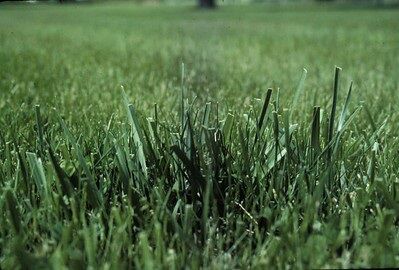Mowing thoughts
A lot of time gets spent on or behind a lawn mower this time of year. While you’re taking care of your weekly mowing chores, what’s going through your mind? Many people enjoy mowing because of the time they have to think about things while getting a job done. Have you ever thought much about the actual mowing you are doing?
For example, have you ever thought about the importance of keeping your mower blades sharp? The whitish cast that you see after you’ve mowed is from mower blades that aren’t sharp enough. It indicates that the blade didn’t cut cleanly, instead shredding the ends of leaf blades. As the shredded ends dry out, the lawn takes on a whitish cast. If you think a dull blade looks bad now—wait a month. As grasses approach maturity and start putting up a seed head, stems become tougher. A dull blade is much more likely to shred rather than cut when grasses get that far along. Under normal use, mower blades should be sharpened every 10 hours of use.
Another observation I’d encourage you to make and spend some time as you are mowing thinking about is mowing height. Have you adjusted mower height since last fall? What do each of those notches really mean when it comes to actual blade height above the ground surface? Is notch three really three inches, or just a number?
Take some time to make sure you are mowing at an appropriate height for your turfgrass species. While it may not hurt to mow lower for the first mowing or two (it can help speed green up as old/dead grass is removed), return the mowing height to a more normal level after the second cutting at the latest for a couple of reasons.
For starters, a short turf allows light to get to the soil surface. Light reaching the soil surface encourages germination of warmer season that thrive in our hot, dry summers. If allowed to germinate, conditions are usually perfect for them to out compete our cool season turf species. A thick, healthy turf stand is often our best weed control option.
Second, what you remove above ground affects what happens below ground. As you remove top growth, roots shrink to feed the plant as it regrows. Turf that is continually cut short will tend to have a reduced capacity root system that can hurt drought tolerance of the stand. Try to mow frequently enough that you aren’t removing much more than a third of the blade length at any one mowing, trying to keep mowing height in an appropriate range for your turfgrass species. Mowing height for stands of Kentucky bluegrass should be in the two to three-inch range. Stay at three to three and a half inches for tall fescue species.
For more information on turfgrass management, your District Extension Office has a number of informational resources available to help. Stop by and check them out or e-mail me at [email protected].

